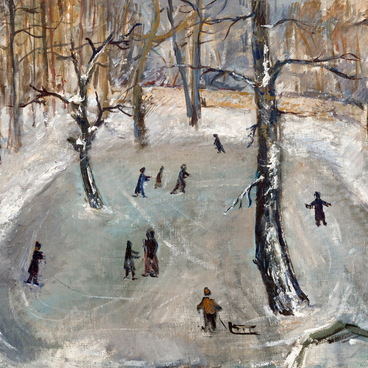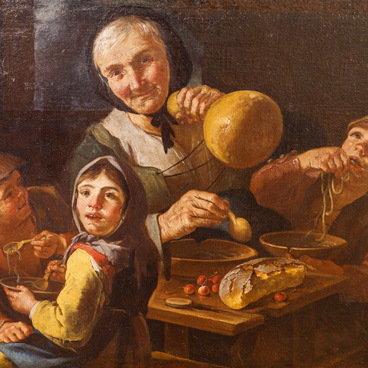In 18th- and 19th-century Italy, the most popular genres were cityscapes and landscapes. Travelers from all over the world visited the Italian Peninsula, and each of them wanted to bring back a souvenir that would later remind them of the amazing Italian views.
Venice became both the most typical subject of paintings and home to most artists of the new artistic genre known as “veduta” which means “a view”, or “a picture” in Italian. It refers to a painting, a drawing, or an etching that provides a photographically accurate depiction of a cityscape or monument.
Venetian artists took commissions from Europe’s most prominent and influential figures. The method of etching was used to print the first black-and-white postcards. Striving to achieve a faithful representation of reality, artists depicted cityscapes with scenes of everyday life and people going about their day. “Vedute esatta”, or “exact vedute” were typical for art in the Age of Enlightenment, the time of research and development. Due to the popularity of vedutas, Venetian landscapes created the captivating image of Venice as a breathtaking world that continues to fascinate people to this day.
The greatest artist of the Venetian veduta genre was Luca Carlevarijs. He pioneered the distinctive style of depicting Venice that was later developed by his students and followers. The unique floating city with its exquisite palaces, squares, bridges, and canals offered natural picturesque views. Carlevarijs did not strive to achieve complete topographical accuracy but rather tried to express his own poetic and romantic vision of the city.
The painter Canaletto managed to combine great accuracy and an innate sense of beauty. He might be the one who created the painting “The Grand Canal. The Doge’s Palace” from the Voronezh Museum’s collection. The artist created impressive visual effects by crafting an impressive contrast of the darker and lighter areas, and a balance of the height of buildings. He imitated a sense of movement by adding people on the embankment and in gondolas and achieved a high accuracy of the cityscape which was very important in the Age of Enlightenment. The painting shows a charming and picturesque view of the Italian city.
Venice became both the most typical subject of paintings and home to most artists of the new artistic genre known as “veduta” which means “a view”, or “a picture” in Italian. It refers to a painting, a drawing, or an etching that provides a photographically accurate depiction of a cityscape or monument.
Venetian artists took commissions from Europe’s most prominent and influential figures. The method of etching was used to print the first black-and-white postcards. Striving to achieve a faithful representation of reality, artists depicted cityscapes with scenes of everyday life and people going about their day. “Vedute esatta”, or “exact vedute” were typical for art in the Age of Enlightenment, the time of research and development. Due to the popularity of vedutas, Venetian landscapes created the captivating image of Venice as a breathtaking world that continues to fascinate people to this day.
The greatest artist of the Venetian veduta genre was Luca Carlevarijs. He pioneered the distinctive style of depicting Venice that was later developed by his students and followers. The unique floating city with its exquisite palaces, squares, bridges, and canals offered natural picturesque views. Carlevarijs did not strive to achieve complete topographical accuracy but rather tried to express his own poetic and romantic vision of the city.
The painter Canaletto managed to combine great accuracy and an innate sense of beauty. He might be the one who created the painting “The Grand Canal. The Doge’s Palace” from the Voronezh Museum’s collection. The artist created impressive visual effects by crafting an impressive contrast of the darker and lighter areas, and a balance of the height of buildings. He imitated a sense of movement by adding people on the embankment and in gondolas and achieved a high accuracy of the cityscape which was very important in the Age of Enlightenment. The painting shows a charming and picturesque view of the Italian city.



